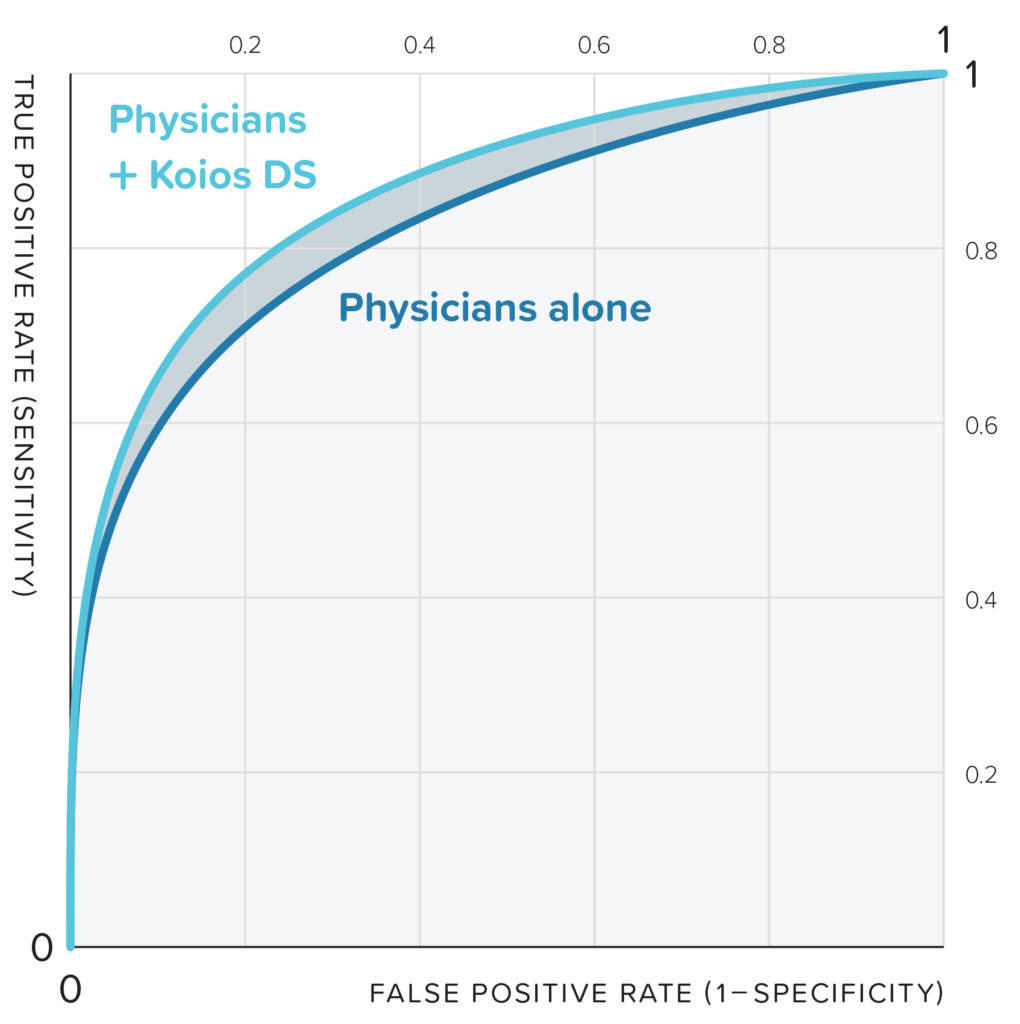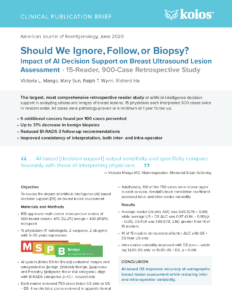Should We Ignore, Follow, or Biopsy? Impact of AI Decision Support on Breast Ultrasound Lesion Assessment
New 900-Case Peer-Reviewed Clinical Research Published by the American Journal of Roentgenology
MATERIALS AND METHODS. A multicenter retrospective review of 900 breast lesions (470/900 [52.2%] benign; 430/900 [47.8%] malignant) on US by 15 physicians (11 radiologists, two surgeons, two obstetrician/gynecologists). An AI system (Koios DS for Breast, Koios Medical) evaluated images and assigned them to one of four categories: benign, probably benign, suspicious, and probably malignant. Each reader reviewed cases twice: 750 cases with US only or with US plus DS; 4 weeks later, cases were reviewed in the opposite format. One hundred fifty additional cases were presented identically in each session. DS and reader sensitivity, specificity, and positive likelihood ratios (PLRs) were calculated as well as reader AUCs with and without DS. The Kendall τ-b correlation coefficient was used to assess intraand interreader variability.
RESULTS. Mean reader AUC for cases reviewed with US only was 0.83 (95% CI, 0.78–0.89); for cases reviewed with US plus DS, mean AUC was 0.87 (95% CI, 0.84–0.90). PLR for the DS system was 1.98 (95% CI, 1.78–2.18) and was higher than the PLR for all readers but one. Fourteen readers had better AUC with US plus DS than with US only. Mean Kendall τ-b for US-only interreader variability was 0.54 (95% CI, 0.53–0.55); for US plus DS, it was 0.68 (95% CI, 0.67–0.69). Intrareader variability improved with DS; class switching (defined as crossing from BI-RADS category 3 to BI-RADS category 4A or above) occurred in 13.6% of cases with US only versus 10.8% of cases with US plus DS (p = 0.04).
CONCLUSION. AI-based DS improves accuracy of sonographic breast lesion assessment while reducing inter- and intraobserver variability.

Read More: https://www.ajronline.org/doi/abs/10.2214/AJR.19.21872
